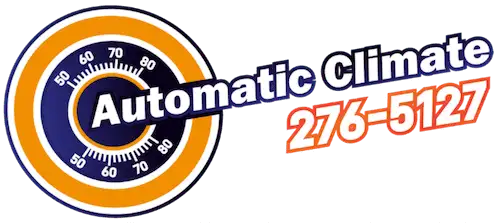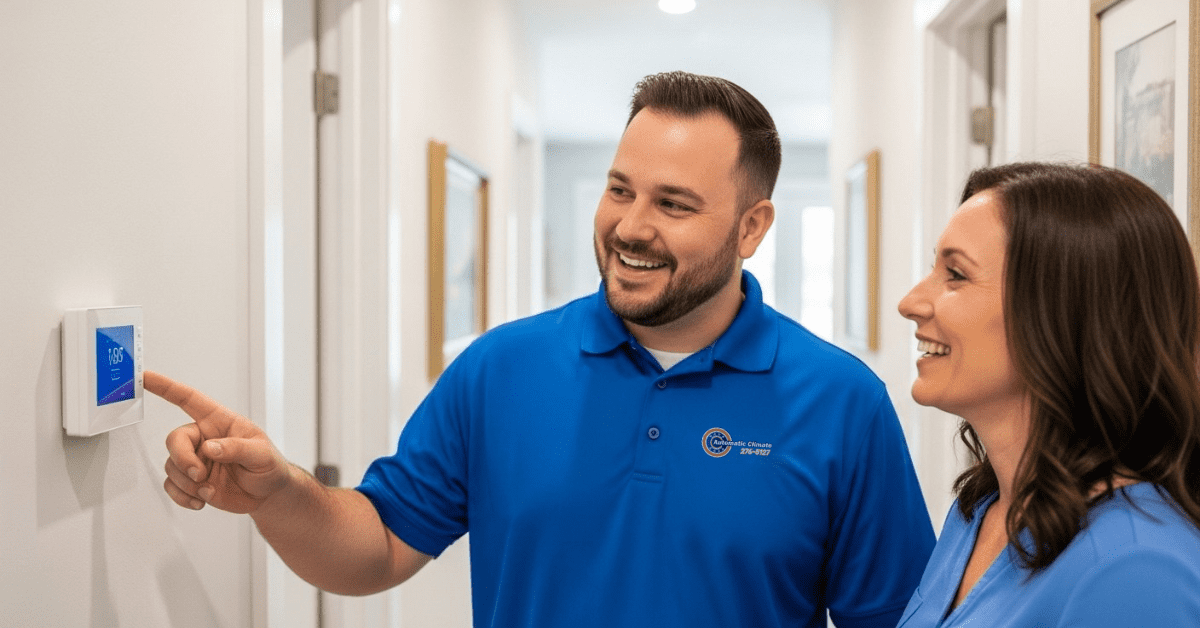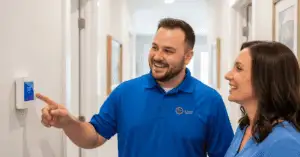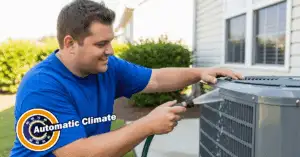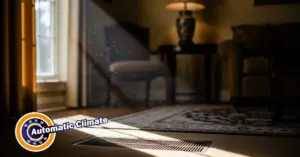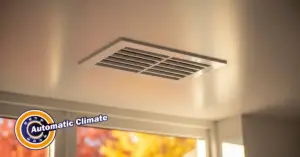Can Professional Duct Cleaning Reduce Fall Allergies in Central Virginia?
Written by Cole Summers at Automatic Climate in Richmond, Virginia.
For residents of Central Virginia, the arrival of fall brings beautiful foliage but also a spike in seasonal allergies. A crucial question many homeowners ask is whether professional duct cleaning for allergies can genuinely make a difference. This comprehensive guide explores the deep connection between your home’s HVAC system and the air you breathe, investigating how a clean duct system might be your best defense against fall allergy triggers like ragweed, mold, and dust mites. We’ll delve into the science, the process, and the tangible benefits of this essential home maintenance task.
The Unseen Allergy Battleground: Your Home’s Air Ducts
“The greatest wealth is health,” the Roman poet Virgil once said. In our modern lives, the health of our indoor environment is a massive part of that equation. Most people in Richmond and throughout Central Virginia spend a significant amount of time indoors, especially as the weather cools. We assume the air inside our homes is a safe haven from outdoor pollutants and allergens. However, your HVAC system, the very thing designed to keep you comfortable, can become a repository and distribution network for the exact particles that trigger your fall allergies. Over years of operation, ductwork accumulates a startling amount of debris: dust, pet dander, pollen that’s snuck in from outside, construction dust, and even mold spores. Every time your furnace or AC kicks on, it can push these contaminants into your living space, creating a constant circulation of irritants. This is why considering professional duct cleaning for allergies isn’t just about cleanliness; it’s a proactive health measure for your family.
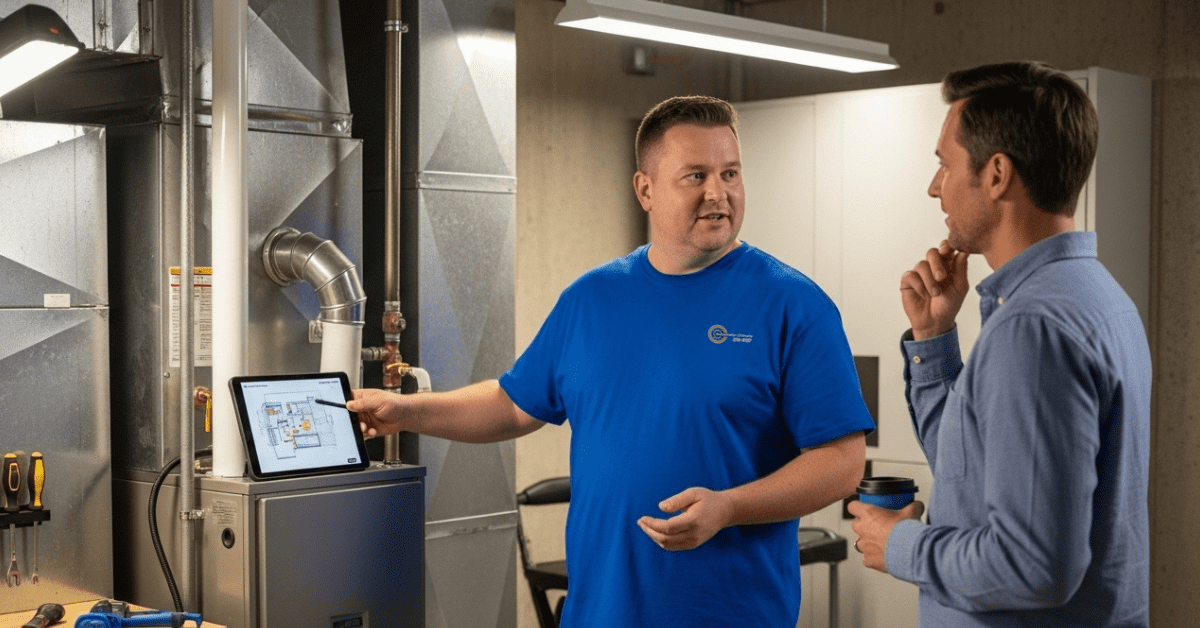
The problem is particularly acute in the fall. Ragweed pollen is a primary culprit for fall allergies in our region, and these tiny particles can easily enter the home and settle in the ductwork. As the seasons change, fluctuating humidity levels can also create a more favorable environment for mold and mildew growth within the dark, undisturbed confines of your vents. Without regular attention, your HVAC system essentially becomes a giant, hidden dust bunny, breathing allergens into every room. A proper assessment and subsequent duct cleaning for allergies can remove this built-up reservoir of irritants, significantly improving your home’s indoor air quality. Many homeowners who were once skeptical find that the air feels fresher and their allergy symptoms are noticeably reduced after a thorough service. It’s not just a theoretical benefit; its something you can often feel immediately. We’ve seen countless cases where a family’s reliance on allergy medication decreases after we’ve performed a comprehensive air duct cleaning service.
Think about it this way: you wouldn’t go years without dusting your furniture or vacuuming your carpets, right? Your air ducts are the lungs of your home, and they require the same, if not more, attention. The buildup is gradual, so you might not notice the declining air quality day-to-day. It often manifests as worsening allergy symptoms, unexplained musty odors, or an unusual amount of dust settling on surfaces shortly after cleaning. These are all signs that your system is crying out for help. Investing in a professional duct cleaning for allergies is an investment in a healthier living space. A company with a long-standing reputation, like Automatic Climate since 1983, uses specialized equipment to safely and effectively remove this debris, ensuring that what circulates through your home is clean, fresh air, not a cocktail of allergens. The difference can be night and day for those sensitive to airborne particles. This process is far more involved then simply vacuuming the registers; it requires powerful, truck-mounted systems to create negative pressure and dislodge years of caked-on grime.
What’s Really Hiding in Your Vents? Central Virginia’s Top Air Vent Culprits
The specific cocktail of contaminants lurking in your ductwork can be a veritable who’s who of allergy triggers. In Central Virginia, the primary suspects include:
- ✔Ragweed and Other Pollens: The undisputed king of fall allergens. These microscopic grains travel for miles and easily infiltrate homes, settling in ducts to be redistributed for weeks.
- ✔Mold and Mildew Spores: Our region’s humidity can be a breeding ground for mold. If there’s any moisture in your HVAC system, spores can flourish in the ducts and get blown into your home’s air, a major health concern and a reason why a focused duct cleaning for allergies is so vital.
- ✔Dust Mites: These microscopic creatures thrive on dead skin cells, which are a major component of household dust. Your ductwork is an all-you-can-eat buffet and five-star resort for them. Their waste products are a potent allergen.
- ✔Pet Dander: We love our furry friends, but their dander (tiny flecks of skin) is a powerful allergen that gets sucked into the return vents and spread throughout the entire house. For pet owners, regular duct cleaning for allergies is not a luxury but a necessity.
- ✔Construction Debris: If your home is new or has been recently renovated, drywall dust, sawdust, and other fine particles can clog your ducts and circulate for months, causing respiratory irritation.
Removing these pollutants at the source is the only effective way to stop their circulation. While high-efficiency air filters can help capture some particles, they can’t do anything about the years of debris already lining your duct walls. That’s where the mechanical agitation and powerful suction of a professional duct cleaning for allergies becomes indispensable. It’s a foundational step for anyone serious about improving their indoor air quality and creating a healthier home environment for their family. This isn’t just a service; it’s a health-oriented decision that pays dividends in comfort and well-being, especially during the challenging fall allergy season here in Virginia. A targeted duct cleaning for allergies directly addresses these hidden sources of misery.
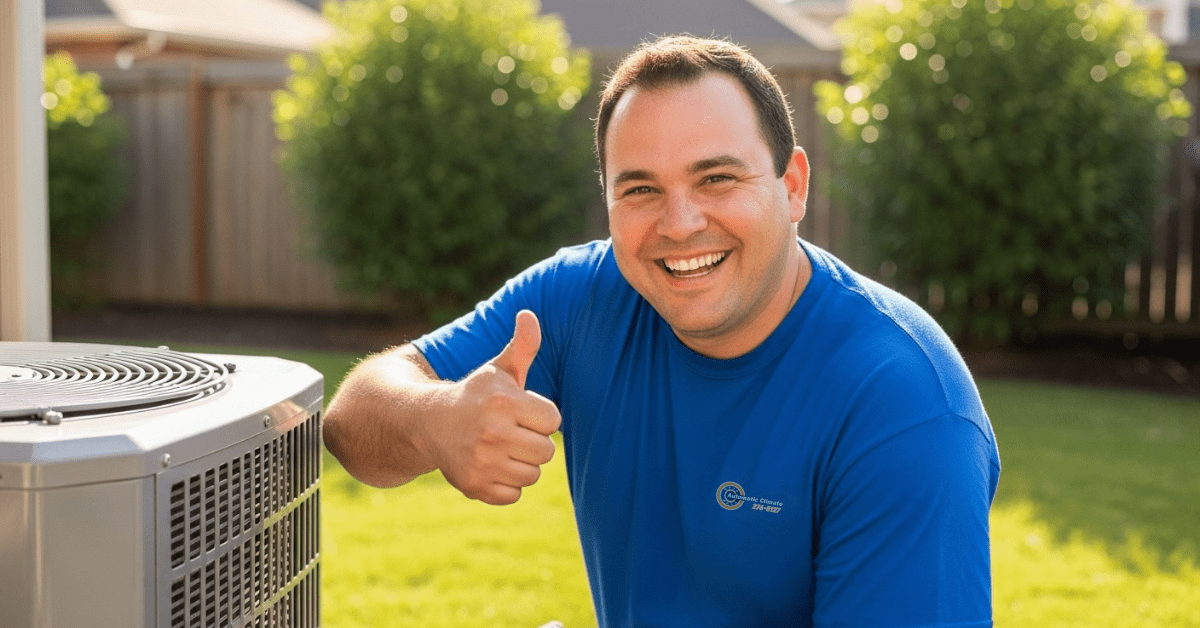
Infochart: The Journey of an Allergen in Your Home
1. Entry
Pollen, dust, and dander enter through open doors, windows, and on clothing.
2. Circulation
The HVAC system’s return vents pull airborne particles into the ductwork.
3. Accumulation
Debris settles and builds up on the interior surfaces of the air ducts over years.
4. Redistribution
Each time the system runs, it blows these concentrated allergens back into your living spaces.
5. Inhalation
You and your family breathe in the contaminated air, triggering allergy and asthma symptoms.
The Professional Duct Cleaning Process: What to Expect
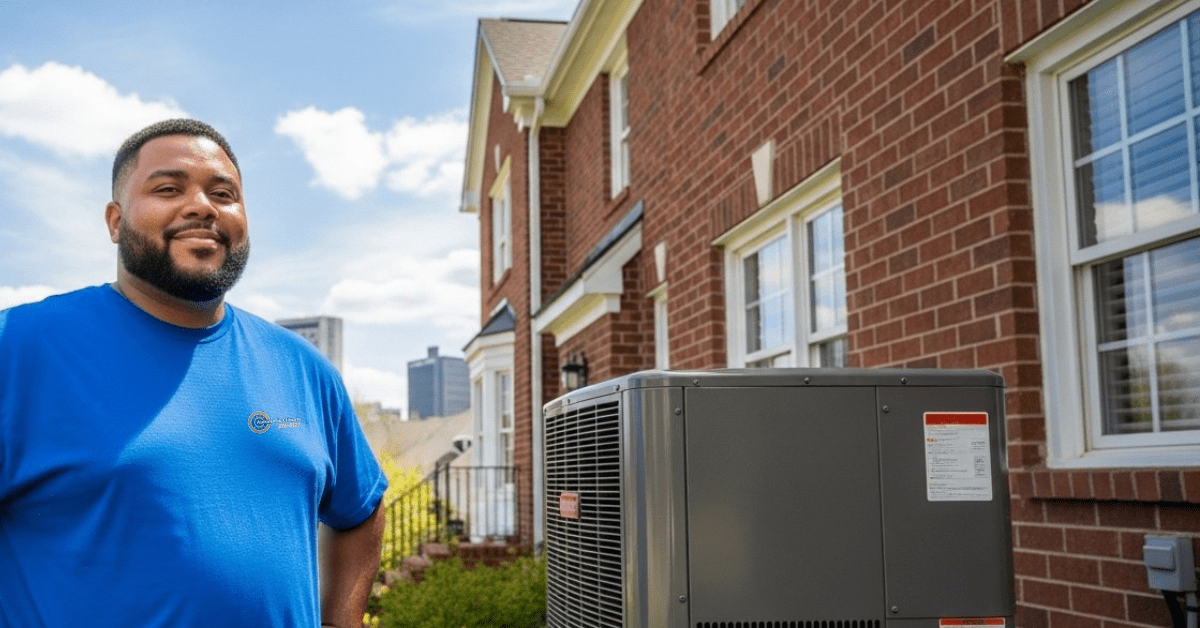
Understanding the process of a proper duct cleaning for allergies helps demystify the service and highlights why it’s a job for trained professionals, not a DIY weekend project. A reputable company like Automatic Climate follows a meticulous, industry-standard procedure certified by the National Air Duct Cleaners Association (NADCA). The first step is always a thorough inspection. A technician will examine your ductwork, often using specialized cameras, to assess the level of contamination. This helps confirm that the service is necessary and identifies any specific problem areas, such as signs of moisture or rodent activity. This transparency is key; you should be wary of any company that wants to start cleaning without first showing you what’s actually in your ducts. A key component of a successful duct cleaning for allergies is this initial diagnosis.
Once the need is confirmed, the real work begins. The core of the process involves placing the entire HVAC system under continuous negative pressure. A large, powerful vacuum collection device, typically mounted on a truck, is attached to the main trunk lines of your ductwork. This creates a powerful suction effect throughout the entire system, ensuring that any dust, dirt, and debris that gets dislodged is immediately sucked out of the house and not released into your living space. This is a critical distinction between professional service and inadequate methods. Without this negative pressure, the cleaning process could actually make your indoor air quality worse by simply stirring up contaminants. The power of this vacuum is essential for an effective duct cleaning for allergies.
With the system under suction, technicians work from each register in your home. They insert high-pressure air whips and specialized agitation tools into the ductwork. These tools move through the ducts, dislodging all the caked-on dust and debris from the interior surfaces. The combination of mechanical agitation and powerful suction pulls everything back to the collection unit outside. It’s a systematic, vent-by-vent process that ensures every part of the supply and return ductwork is thoroughly cleaned. In addition to the ducts themselves, the technician will also clean other critical components of your HVAC system, including the blower motor and housing, the evaporator coil, and the registers and grilles. A comprehensive duct cleaning for allergies treats the entire system, because cleaning only one part leaves contaminants in others. When searching for a provider, ask if their service is comprehensive. A true duct cleaning for allergies addresses all points of the system, not just the visible ducts. It’s a holistic approach to reducing allergens in your home for the long term.
Choosing a Reputable Duct Cleaning Service in Richmond, VA
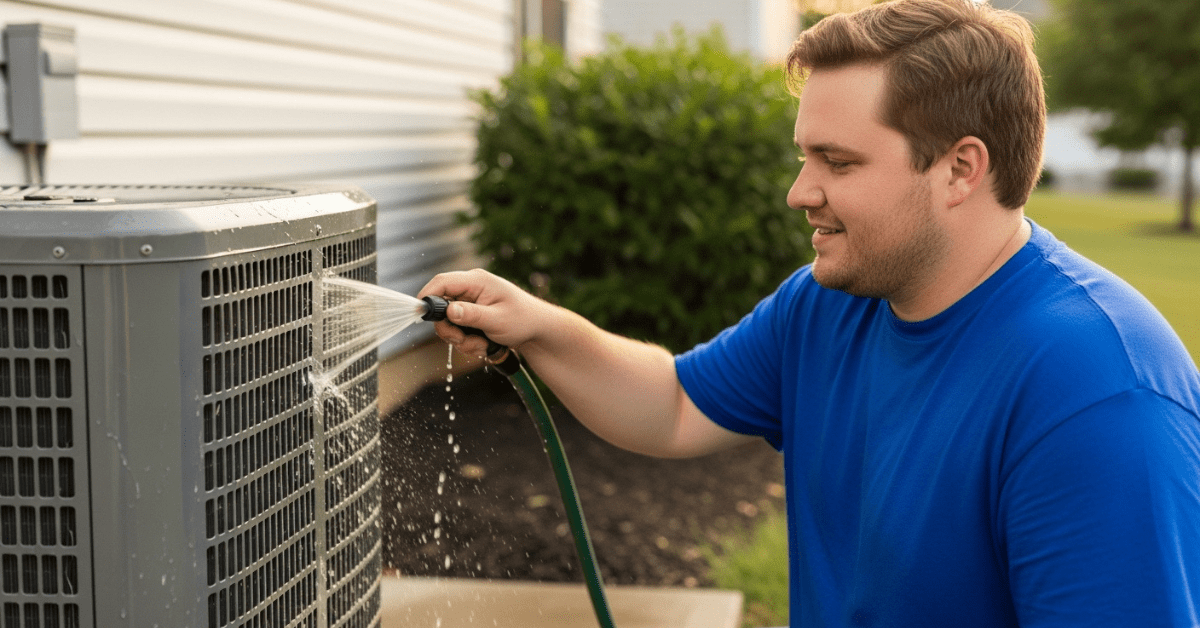
Unfortunately, the duct cleaning industry has its share of scams. As noted by publications like The Washington Post, “blow-and-go” companies often lure customers with incredibly low prices, then do a superficial job that provides little to no benefit. To ensure you’re getting an effective duct cleaning for allergies, look for these signs of a reputable provider:
- ✔NADCA Certification: Membership in the National Air Duct Cleaners Association is the gold standard. It means the company adheres to a strict code of ethics and standards of practice.
- ✔Experience and Local Reputation: A company that has served the Central Virginia area for decades, like Automatic Climate, has a proven track record. Check their reviews and ask for local references.
- ✔Proper Equipment: Ask if they use a truck-mounted vacuum system. Portable units are generally less powerful and less effective for a thorough duct cleaning for allergies.
- ✔Transparent Pricing: They should provide a clear, upfront estimate based on the size of your home and system, not a vague, too-good-to-be-true price.
- ✔Proof of Work: A good company will offer to show you before-and-after photos or camera footage from inside your ducts.
Taking the time to vet your provider ensures that your investment in duct cleaning for allergies actually pays off with cleaner air and fewer symptoms. Don’t let a scam artist take your money for a service that does more harm than good. A little research goes a long way in protecting your home and your health.
HVAC Maintenance Tips for Better Indoor Air
Change Your Air Filter Regularly
This is the single most important DIY task. Check it monthly and replace it at least every 90 days (or more often if you have pets or allergies).
Keep Registers and Vents Clean
Regularly vacuum your supply and return air registers to prevent dust buildup from being pulled into the system.
Maintain Your Outdoor Unit
Keep the area around your outdoor condenser unit clear of leaves, grass clippings, and debris to ensure proper airflow.
Schedule Professional Tune-Ups
Have a qualified HVAC technician perform a professional tune-up on your heating and cooling systems annually to keep them running efficiently and cleanly.
Sources: NADCA, Better Homes & Gardens
Beyond Allergies: Additional Benefits of Clean Air Ducts
While the focus for many Central Virginia homeowners is allergy relief, the benefits of a professional duct cleaning extend much further. One of the most significant advantages is improved HVAC system efficiency. When your ducts are clogged with dirt and debris, your furnace and air conditioner have to work harder to push air through the system. This strain leads to increased energy consumption and higher utility bills. By cleaning the ducts, you restore smooth airflow, allowing your system to operate at peak efficiency. This not only saves you money but also reduces wear and tear on expensive components, potentially extending the lifespan of your entire HVAC unit. For many, the energy savings over a few years can help offset the cost of the duct cleaning for allergies service itself.
Another major benefit is odor removal. If you’ve ever dealt with a persistent musty or stale smell in your home that you just can’t locate, your ductwork could be the culprit. Odors from pets, tobacco smoke, cooking, and even mold can get trapped in the dust and debris lining your vents. Every time the system runs, these unpleasant smells are recirculated. A thorough cleaning removes the odor-trapping particles at their source, leading to a genuinely fresher, cleaner-smelling home. This is particularly beneficial for homeowners looking to sell their property, as a fresh-smelling home is much more appealing to potential buyers. A proper duct cleaning for allergies also doubles as a powerful deodorizing service. The value of this improved living environment cannot be overstated, and it is a powerful ancillary benefit to the primary goal of a professional duct cleaning for allergies.
Finally, a clean HVAC system means a cleaner home overall. Do you ever feel like you’re constantly dusting? Clogged, dirty ducts can be a primary contributor to household dust. They act as a reservoir, blowing fine particles of dust, fibers, and other debris onto your furniture, floors, and countertops. After a professional duct cleaning, many of our clients report a noticeable reduction in the amount of dust that accumulates in their homes, which means less time spent cleaning. This trifecta of benefits—allergy relief, improved efficiency, and a cleaner, fresher home—makes a compelling case for why a periodic, professional duct cleaning for allergies is one of the smartest maintenance investments you can make for your property and your family’s health. It’s a holistic improvement that touches multiple aspects of your daily life.
Ready for Cleaner Air This Fall?
Don’t let fall allergies ruin the season. A professional duct cleaning from Automatic Climate can remove years of allergens from your home’s HVAC system. Breathe easier, reduce dust, and improve your system’s efficiency.
Or call us at (804) 803-1983
Case Study: The Johnson Family in Midlothian, VA
The Problem: The Johnson family, with two young children and a golden retriever, noticed their son’s fall allergies were getting worse each year. Despite regular cleaning and using air purifiers, he was constantly sniffling and sneezing indoors.
The Solution: After a neighbor’s recommendation, they called Automatic Climate for a duct inspection. Our camera revealed significant buildup of dust and pet dander. We performed a comprehensive duct cleaning for allergies, clearing out years of accumulated debris.
The Result: Within a week, Mrs. Johnson reported a “remarkable difference.” Her son’s symptoms had noticeably improved, the house smelled fresher, and there was visibly less dust on their dark wood furniture. They were amazed at the impact the service had on their overall indoor air quality.
When Duct Cleaning is Just One Piece of the Puzzle
It’s crucial to have realistic expectations about duct cleaning for allergies. While it is a powerful tool for improving indoor air quality, it’s not a silver bullet that will solve every respiratory issue. If there are underlying problems with your HVAC system or your home’s building envelope, duct cleaning will only be a temporary fix. For example, if you have a persistent moisture issue—a leaky roof, a damp basement, or an oversized air conditioner that isn’t dehumidifying properly—mold will continue to grow back in the ducts even after a thorough cleaning. It is vital to address the root cause of the moisture first. A reputable HVAC company can help you diagnose these kinds of problems, which might require services like air conditioning repair or basement waterproofing. Think of duct cleaning as one part of a holistic home health strategy.
“An ounce of prevention is worth a pound of cure,” as Benjamin Franklin wisely noted. This is especially true for indoor air quality. Complementing your duct cleaning for allergies with other proactive measures will yield the best long-term results. This includes upgrading to a higher-MERV rated air filter to capture smaller particles, using a whole-home humidifier or dehumidifier to maintain optimal humidity levels (between 30-50%), and ensuring your home is properly ventilated. For families with severe allergies or asthma, investing in an advanced air purification system, such as a UV light sanitizer or a HEPA filtration system that integrates with your HVAC, can provide an additional layer of protection. Combining these technologies with a clean duct system creates the healthiest possible indoor environment. A true duct cleaning for allergies service provider will discuss these options with you as part of a complete solution. This is a key part of any serious effort to get relief via duct cleaning for allergies.
Furthermore, your daily habits play a significant role. Regular vacuuming with a HEPA-filter vacuum, frequent washing of bedding in hot water, and keeping pets groomed can dramatically reduce the allergen load in your home. These actions decrease the amount of dust and dander that can be pulled into your HVAC system in the first place, extending the benefits of your professional duct cleaning. The ultimate goal is to create a multi-faceted defense against allergens. Starting with a clean slate by performing a duct cleaning for allergies is the foundational step. Then, maintaining that clean environment with good filtration, humidity control, and regular housekeeping will ensure you and your family can breathe easier for years to come. The effort put into a comprehensive strategy for indoor air quality, starting with professional duct cleaning for allergies, is one of the best investments you can make in your family’s health and comfort in your Central Virginia home. Anyone searching for effective duct cleaning for allergies should consider these complementary strategies.
Frequently Asked Questions
Additional Resources & Further Reading:
- WebMD: Air Duct Cleaning for Allergy Relief
- Healthline: Can Cleaning Your Air Ducts Help with Allergies?
- U.S. Environmental Protection Agency: Should You Have the Air Ducts in Your Home Cleaned?
- National Air Duct Cleaners Association (NADCA)
- The New York Times: How to Improve Your Indoor Air Quality
- Our Pillar Guide for Richmond Homeowners
#DuctCleaning #FallAllergies #IndoorAirQuality #RichmondVA #HVACMaintenance #HealthyHome #AirDuctCleaning #CentralVirginia #AllergyRelief #CleanAir
Legal Disclaimer:
This article was drafted with the assistance of a Large Language Model, specifically Gemini, which was used for initial drafting and article outlining. The content was subsequently reviewed, edited, and fact-checked by a human writer to ensure accuracy, clarity, and adherence to editorial standards. While AI assists in the creation of this content, the human author(s) retain editorial control and full responsibility for the final content, including its accuracy and integrity. Readers should be aware that AI-generated content may present limitations, and the information provided should be considered with this in mind.
The information provided in this article is for general informational purposes only. While we strive to keep the information up-to-date and correct, we make no representations or warranties of any kind, express or implied, about the completeness, accuracy, reliability, suitability, or availability with respect to the 1 article or the information, products, services, or related graphics contained in the article for any purpose. Any reliance you place on such information is therefore strictly at your own risk. 2 HVAC systems involve electrical components, refrigerant, and potentially natural gas; attempting repairs without proper training and safety precautions can result in injury, property damage, or voiding warranties. Always consult with a qualified and licensed HVAC professional, like those at Automatic Climate (https://www.automaticclimate.com/, (804) 803-1983), for diagnosis and repair of HVAC issues.
